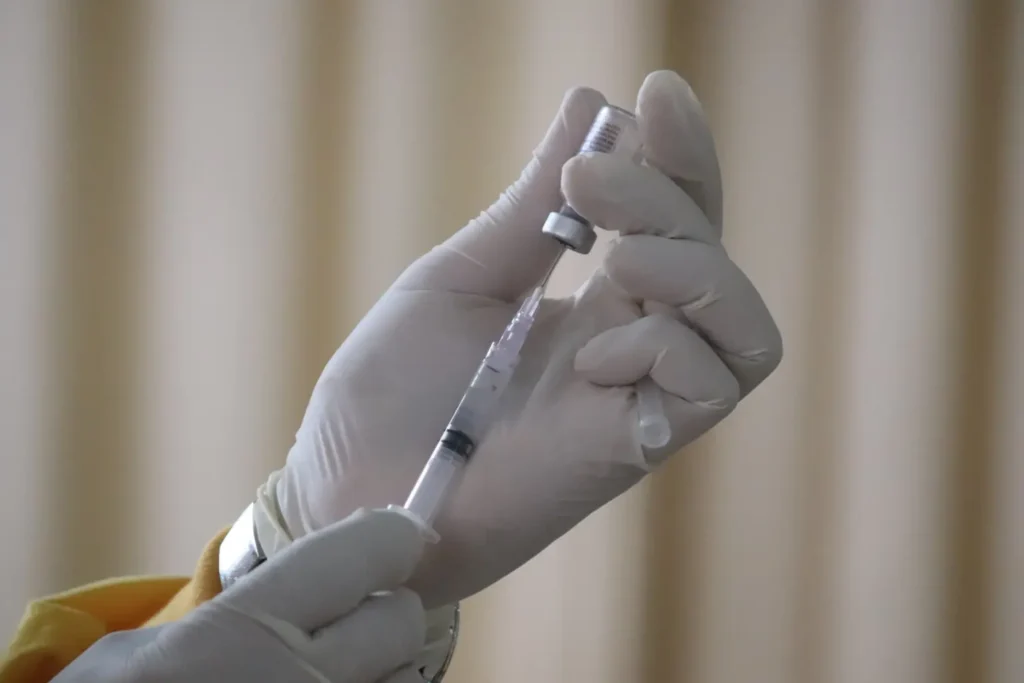Western Australia’s strict new ‘Image-based abuse’ laws cast the net wide, but leave large loopholes;
Western Australia’s tough new law, criminalising the non-consensual distribution of intimate images, (colloquially dubbed “revenge porn laws”) has already caught some interesting offenders since its commencement in 2019.
Under the new offence, a person who distributes an intimate image of another person, without their consent, commits a crime punishable by up to 3 years imprisonment, or a fine of $18,000. The penalty is one of the harshest in Australia, aimed as a deterrent for an offence that is becoming increasingly common in the social media age.
The offence captures any image (moving or still) that shows a person’s genitalia, anal area, or breasts (in the case of a female or transgender person), whether bare or covered by underwear, in circumstances in which the person would reasonably expect to be afforded privacy. With no requirement that the offender intended to harm the victim, the threshold for culpability under the offence is low.
During the Second Reading Speech of the proposed Bill, MP Simone McGurk explained the preference of the term ‘image-based abuse’, rather than ‘revenge porn’, because “it helps to encompass a much broader spectrum of abuse that goes well beyond the narrative of a vindictive partner.”
What could a victim do before the Intimate Image offence existed?
Prior to the criminalisation of this offence, Australian law did not specifically deal with this type of abuse. The only recourse for a victim of intimate image abuse was to sue the perpetrator through an action in equity, for breach of confidence. A recent example of this equitable recourse being successfully argued, was in Wilson v Ferguson [2015] WASC 15. In that case, the perpetrator and the victim were engaged in an intimate sexual relationship, which the victim ended shortly before the perpetrator distributed sexually explicit images and videos of the victim, via his Facebook site, to an audience of several hundred of his friends, co-workers and acquaintances. Evidence admitted to the Supreme Court showed that the perpetrator intentionally distributed the images and videos as retribution, and to cause humiliation and distress to the victim.
Was it easy to succeed in Breach of Confidence?
When argued successfully, breach of confidence can grant the victim relief in the form of an injunction, ordering the perpetrator to remove the offensive images, and prevent further distribution of the images. In addition to an injunction, a victim can potentially receive monetary compensation for the embarrassment and distress caused by the disclosure of the intimate images (otherwise categorised as “non-economic losses”).
The essential elements of an action in equity for breach of confidence, are that the information was of a confidential nature, that it was communicated or obtained in circumstances importing an obligation of confidence, and that there was an unauthorised use of the information.
What Happened?
In this case, an injunction was granted because there was a reasonable apprehension that the conduct might be repeated, and also, no evidence that the images had been so widely distributed so that an injunction would serve no utility, or images had lost their confidential character [61]. However, the usefulness of the injunction is questionable, given each of the Facebook users who saw the images and videos could also share them to their friends, without knowing that an injunction even existed – and they certainly would not be bound by it, if they knew.
The victim faced legal hurdles in establishing a claim for compensation for the non-financial losses suffered. The reasons were twofold. First: relief by way of equitable compensation usually only for recognised psychiatric or psychological illness. Here the harm was distress and humiliation – not a recognised illness. Second – equitable compensation usually only granted to compensate for economic loss, not humiliation and distress.
Catching Offenders under the New Offence
The first person convicted in Western Australia was Michael Joseph Brindley, aged 25. In a case that seems perfectly aligned to the intended legislative purpose, Mr Brindley created a fake social media account and posted 7 explicit pictures of his ex-girlfriend, after she broke up with him. Mr. Brindley was spared the jail sentence, but was given an intensive supervision order for 12 months instead. That Mr. Brindley had not used the images to extort the victim, was the reason that Magistrate Potter declined to impose a jail sentence, for the first time remorseful offender.
A Wide Net, with Many Loopholes
The second person charged under this offence was Detective Senior Constable Christine Frey. Ms. Frey was charged with unlawfully distributing an intimate image without consent, after she showed the image briefly to her colleagues for advice, following an incident where a child came across the image by accident while playing on Ms Frey’s phone. Ms. Frey was found not guilty, on the basis that she was acting in her role as a police officer at the time of showing the image to her colleagues.
While this case highlights the breadth of the application of the offence, it also highlights the offence’s numerous exceptions and defences available, to provide obstacles to prosecution. Amongst the defences possible (aside from law enforcement) there is the defence of scientific, educational or medical purposes; legal proceedings; and for media activity purposes. There is also the defence that “a reasonable person” would consider the image to be acceptable for distribution, under the circumstances.
No Defence for “Art”
While many of these defences are unsurprising, it may come as a surprise that there is no defence for art or artistic expression was included in the legislation. If a person was to distribute an explicit image under the guise of “art”, there would be no specific defence for that. Indeed, this was the intention of Parliament. In the Second Reading Speech of the Bill, Attorney General John Quigley reiterated that, despite the variety of circumstances that could result in a charge being laid against an alleged offender, “the test always is whether the reasonable person would consider the distribution of the image to be acceptable in the circumstances”. He declined to consider whether each example suggested by other Ministers, would fall foul of the legislation, (including for art) reiterating that the question would be decided by the Courts.
“… once again the court would have to decide the test on the basis of reasonableness having regard to the matters set out in proposed new section” – Attorney General, John Quigley.
Define “underwear”, or Define “Privacy”…
Alleged offenders may be able to use the defence that the image was not an “intimate image”, for the purpose of the law. “Intimate image” is widely drafted to be defined as an image (moving or still) that shows a person’s “genital or anal area” and the “breasts of a person” “whether bare or covered by underwear”, “in circumstances where the person would reasonably expect to be afforded privacy.” A potential defence could be raised on the basis that certain types of clothing would actually constitute coverage – thereby preventing the image to be deemed “intimate”.
What may prove more interesting – and unforeseeable – is how a Court would interpret the phrase “in circumstances where the person would reasonably expect to be afforded privacy.” Social media platforms have changed the way individuals interact with technology, by allowing users to film themselves in intimate moments, in many instances for monetary gain. An interesting question that may plausibly be put forward by the defence, would be whether a user of social media, who shares intimate and private imagery across multiple accounts and platforms, for financial gain, could reasonably expect to be afforded privacy.
“I am extremely concerned that there could be an unintended consequence; that is, we could potentially criminalise the actions of a very large number of people” – Zac Kirup, Member for Dawesville.
Consent… but for how long and what for?
The offence provides a full defence, if it can be proved that the victim consented to the distribution. ‘Consent’ is structured so that the onus of proving consent, falls on the person who is charged with unlawful distribution, rather than on the victim. The alleged offender will have a complete defence, if they can prove distribution was consensual, or consent was not withdrawn. In this sense, the provision mirrors the sexual assault offence because the onus is not on the victim to prove the alleged offence happened.
Free and voluntary consent is a requirement, for distribution of the images to be lawful. However, consent to distribution of the image cannot be given by a person under 16 years. Therefore it is lawful for a person under 16 years to be the subject of an intimate image, but it becomes a criminal offence once the image is distributed.
Companies, Corporations and Publication
The intimate image office makes it unlawful for a “person” to distribute an intimate image. As a “person” includes a corporation under the Corporations Act 2001, the offence may capture those corporations’ publishing tabloid-style news items featuring intimate images. Indeed, such an intended purpose was discussed in Parliament. During the Second Reading Speech of the Bill, a number of MP’s indicated that they wanted the offence to capture companies and corporations, who publish intimate images.
Although a defence exists for “media activity purposes”, that defence requires the alleged offender to show that no harm was intended; that publication was in the public interest; and that a reasonable person would consider distribution acceptable. Depending on how strictly a Court would interpret and apply each provision, this defence may be difficult to substantiate, for certain types of media publications, such as tabloids and magazines.
Take Away Messages:
The new intimate image abuse laws create a strong deterrent for any person (or company) distributing intimate images of others, without their consent. By drafting the legislation widely, and placing the onus of consent on the offender, the new offence is likely to continue to capture a wide group of persons. The net result of this is likely to be, that the Courts will have a bigger caseload burden overall. In determining whether a person is culpable, the legislation has left a large amount of judicial discretion to the Court, in deciding the degree of culpability of the offender, and the resulting level of the penalty for the commission of the offence. For victims, the criminalisation of this behaviour provides a strong message of deterrence to offenders.
For corporate “persons”, a penalty of $18,000 may not be a strong enough deterrent to publication, depending on the profitability of the image being published. This may be an area for more substantial legislative reform, as victims look for equitable and monetary relief against corporate publishers of intimate images, outside of the existing defamation and breach of confidence avenues, available under the common law.







